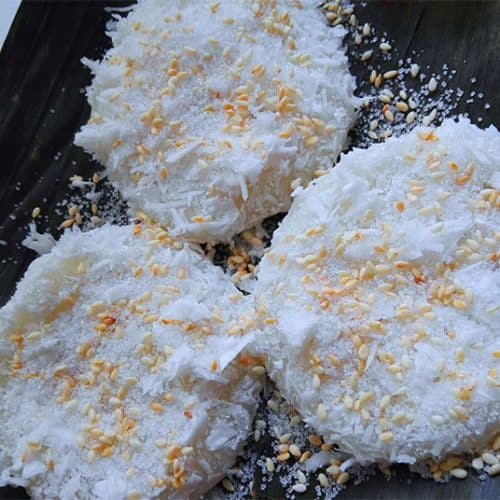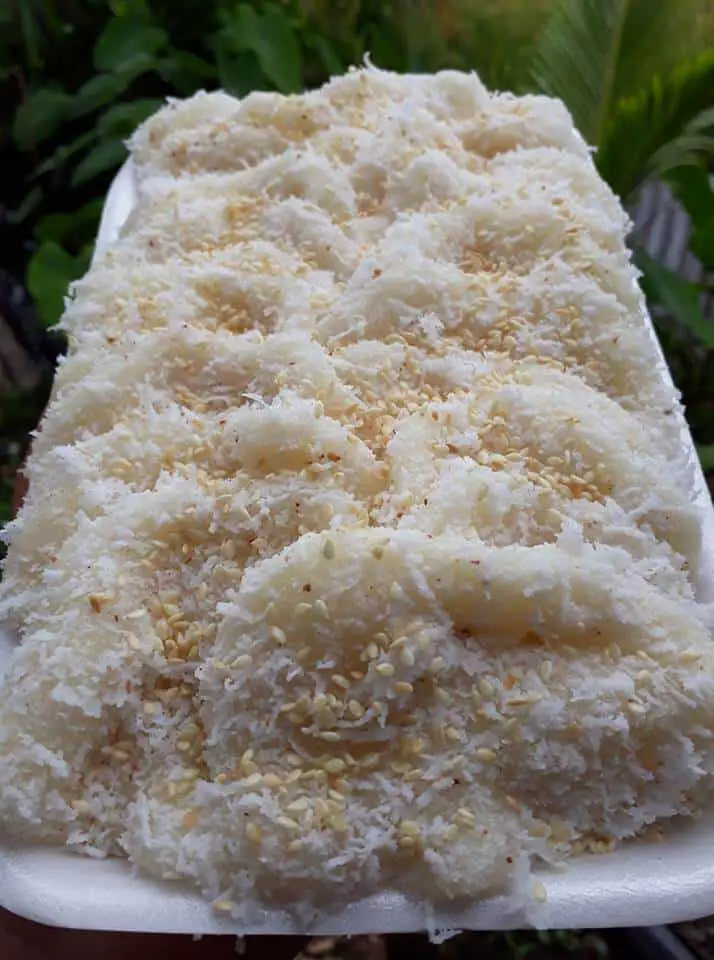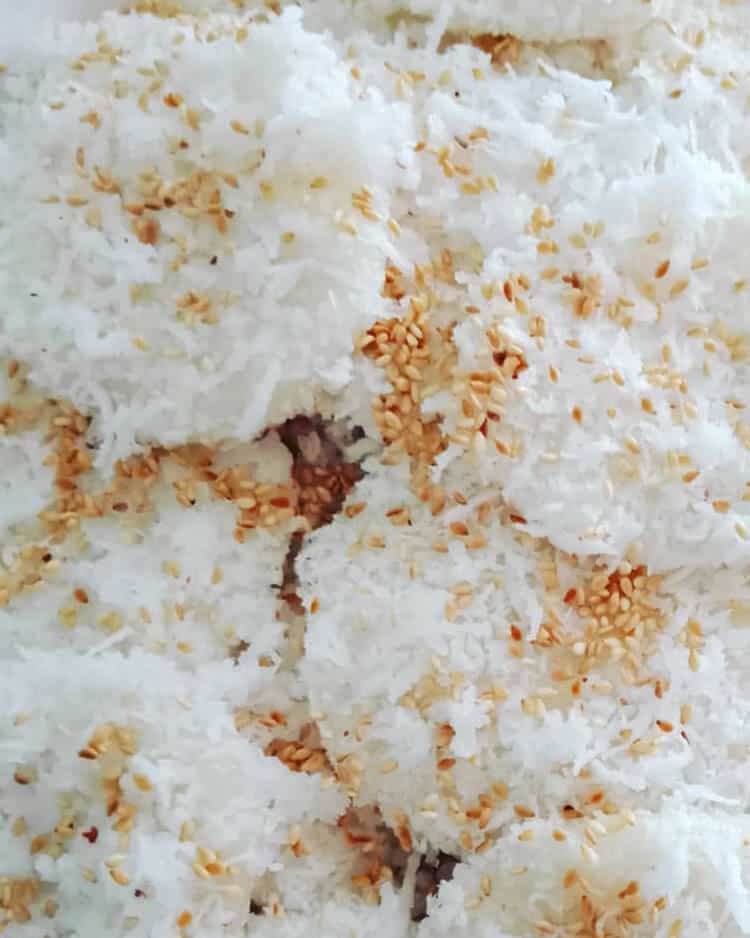Homemade Palitaw Filipino rice cakes
Do you love Native Delicacies? Filipinos are very fond of eating these and it’s always present especially in festivities.
The Palitaw Recipe is among the Filipino Foods that had become a favorite not only in celebrations but as a snack as well.
Pangasinan is where Palitaw originated and it came from the word “Litaw” which means to surface or to float.
It’s because it is the manner you will know that your palitaw is cooked; it will float on top of the water.

This native delicacy is a bit similar to the Mocha Cakes of Japan and the Rice Cakes of South Korea.

Check out our new cookbook
Bitemybun's family recipes with complete meal planner and recipe guide.
Try it out for free with Kindle Unlimited:
Read for freeIn this post we'll cover:
Palitaw Recipe Tips and Preparation
Originally, Palitaw is made from washed Ground Sticky Rice or Kakaning Malagkit as they call it in Tagalog (Almost the same as the Sumang Malagkit).
After forming it in oval shapes, it is then placed in boiling water.
But in recent years and maybe because life has become so fast-paced, they have started to use glutinous rice flour since it won’t use so much time to grind and soak the sticky rice.
This will make it easier to prepare and cook. Once it’s done, you can now add grated young coconut, white sugar, and if you desire sesame seeds can also be added.
You can also stuff it with other ingredients like nuts or fruits though it will be a bit hard to cook this because there’s a possibility that it will break while it’s being cooked.
The texture can be delicate and moist to rubbery and chewy. It depends on how you would like your Palitaw Recipe to be of course.

Palitaw Recipe (Homemade)
Ingredients
- 2 cups freshly grated coconut
- 4 tbsp toasted sesame seeds (any color will do but brown sesame seeds are the most aromatic and have the best nutty flavor)
- 1 cup white sugar
- 3 cups glutinous rice flour
- 2 pinches salt
Instructions
- Spread the grated coconut in a wide shallow bowl.
- Mix the cooled sesame seeds and sugar in another shallow bowl.
- In a bowl, whisk together the glutinous rice flour and salt. Pour in 3/4 cup of water. That’s water at room temperature. Not hot. Not warm. Not cold. Mix until you have a soft dough that comes together. The dough shouldn’t be crumbly nor should it be wet. Altitude affects the texture of dough so you may need to use less or more water.
- Pinch off about a tablespoon of dough. Repeat until you have uniformly sized small pieces of dough.
- In a pot, boil enough water to reach a depth of at least six inches.
- Flatten a piece of dough into a disc about a quarter of an inch thick and drop immediately in briskly boiling water. Cook the rice cakes three or four at a time to prevent them from sticking to each other.
- The rice cake will sink to the bottom of the pot when you drop it. As soon as it rises to the top (it takes less than a minute if the temperature of the water is correct), scoop out with a slotted spoon and move to a plate.
- Flatten and cook the rest of the rice cakes in the same way.
- Coat both sides of each rice cake with grated coconut.
- Serve the palitaw with the sugar-sesame seeds mixture on the side. Or cool the coconut coated rice cakes to room temperature and dredge in the sugar mixture. Serve as a snack or as dessert.
Video

Health Benefits:
This can be served as a dessert, snack or a part of the menu when you have any festivities. Most of the time, people love to partner this with coffee but you can also try with sago or even soda.
Whichever you want, it will surely be more than just satisfying to the tummy and the tongue.
The kids and those with a sweet tooth will absolutely love the sweetness of this native delicacy and will probably keep coming for more.
This is not just delicious but healthy as well.

It has a good amount of the beneficial mineral selenium and has antioxidants that protect the tissues and shields the cells of your body from free radicals that can damage your body.
Selenium is good for the thyroid gland because it regulates the thyroid hormones which keep the blood vessels to function properly.
It also has manganese content which can help in the body’s metabolism.
It can also help make proteoglycans which belong to the protein family that is needed to have healthy bone and cartilage.
Aside from these, it is also a good source of Vitamins B5 which aids in producing energy and boosts metabolism. It also helps in hormone synthesis which maintains the hormone balance in the body.
Wow! You wouldn’t think that the health benefits of this simple delicacy aren’t that important, right?
Isn’t that enough reason to start making the Palitaw Recipe a frequent part of your family’s menu?
Check out our new cookbook
Bitemybun's family recipes with complete meal planner and recipe guide.
Try it out for free with Kindle Unlimited:
Read for freeJoost Nusselder, the founder of Bite My Bun is a content marketer, dad and loves trying out new food with Japanese food at the heart of his passion, and together with his team he's been creating in-depth blog articles since 2016 to help loyal readers with recipes and cooking tips.
